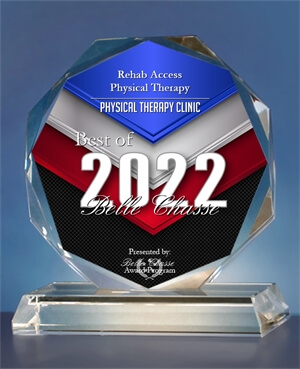Back pain is common—unfortunately common. Most people will experience back pain at some point in their life. Whether as a result of poor shoes, pregnancy, injury or just plain old bad posture, back pain is something that far too often cannot be ignored.
That doesn’t mean, however, that back pain is something that can’t be fixed. Physical therapy is an ideal solution to back pain, offering support for the muscles, tendons, ligaments, tissues and joints that make up the complex nature of your back.
What Causes Back Pain?
Back pain is frequently caused by a combination of tension and / or physical injury, such as a herniated disc. Different sources of back pain will cause pain to develop in different areas of the back. Pain that occurs higher in the back, almost hear the neck or shoulders, for example, is often the result of tension or tightened muscles. Pain that develops here is often acute and non-severe, and can frequently be addressed through massage.
Low back pain, including pain that develops in the lumbar area, however, is sometimes the result of herniated discs, damage to the lumbar spine, or even as a result of nerve damage associated with the sciatica.
When you are looking for treatment for back pain, you need to consider the following factors:
- Does your pain become better or worse at different times of day?
- Does your pain change depending on the type of shoes that you wear?
- Is your pain more significant after you’ve been on your feet for extended periods of time?
- Does the pain radiate or shift, moving from the lower part of your back up, or down into your legs?
- Is the pain accompanied by any level of numbness or tingling?
Answering the above questions will help provide you and your physical therapist with the insight necessary to understand the best sort of exercises to alleviate your back pain.
Treatment for Back Pain
Physical therapy is an ideal solution to back pain, as it combines the most effective exercises with targeted application based on your individual needs. Your physical therapist will develop a PT routine dependent on the type of pain you are experiencing, where you are experiencing the pain, and whether the pain is acute (short-term), recurrent, or chronic.
As not all back pain is the same, physical therapy for back pain may incorporate any of the following components:
- Mobility exercises
- Stretching exercises
- Education for better preventative back care
- Training for proper lifting, bending and pulling
- Use of hot and cold therapy
- Proper braces, back-support and footwear
In many cases back pain will go away on its own, but sometimes it doesn’t. The best way to prevent back pain from becoming chronic is to act early with restorative and therapeutic interventions. While it may seem counterintuitive, resting for a prolonged period of time can actually make back pain worse. In many situations, the best thing that you can do is get up and be active, stretching your back muscles and helping your back to heal before the pain settles in.
Through targeted movements, specialized stretches and regular interventions and guidance, your physical therapist can help you experience lessoned pain with reduced recovery time, as well as restored mobility. Don’t attempt any physical therapy exercises on your own without first receiving guidance from your physical therapist.
Always consult your physical therapist or physician before starting exercises you are unsure of doing.



